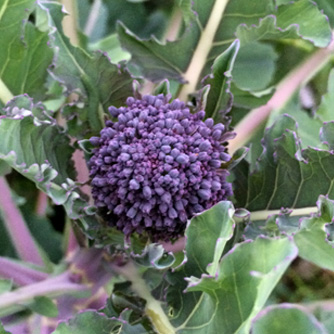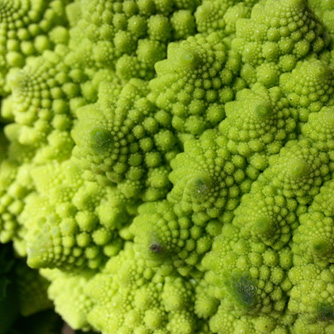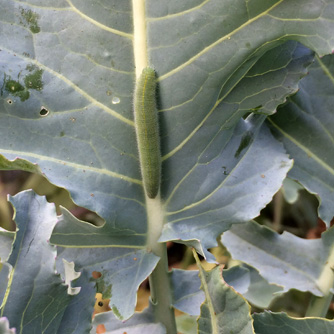Broccoli
BackBroccoli is part of the crucifer or brassica family which also includes Brussels sprouts, cabbages, cauliflowers, radishes, turnips, swede and more. It’s a cool season annual vegetable that is easy to grow and will thrive in a wider range of temperatures and locations than some of its fussier family members. There are even some hybrid varieties that are heat resistant and grow quite well in warm subtropical climates.
The best known broccoli is the type seen in supermarkets with big green heads however there are plenty of others to try including the “sprouting” types. These varieties produce additional small side shoots after the central head has been removed, extending your harvest for several weeks. Or for something really unusual grow the Italian heirloom variety ‘Romanesco’ with lime green heads shaped into striking spiral formations. It has a nutty and almost spicy flavour compared to regular broccoli.
How To Grow Broccoli
Pick a full sun position for growing your broccoli and prepare the soil with plenty of compost and organic fertiliser. Apply dolomite or lime at the same time to boost calcium levels.
Plants can be grown from seeds or seedlings. Seeds are best sown in trays first and will take about 10 days to germinate. Then, when they are 5-10cm high, they can be transplanted into the garden bed. Water your plants in with OCP eco-seaweed and mulch with an organic sugar cane or straw.
Broccoli head ready for picking
As plants progress if they become top heavy mound the soil up around the base of the plant every now and then for support.
Sowing Guide For Broccoli
| Growing Zone | Sowing Time |
| Cool Zones | Spring, Summer, Autumn, Winter* |
| Mediterranean Zones | Summer (late), Autumn, Winter* |
| Warm & Temperate Frost Free Zones | Summer, Autumn, Winter |
| Tropical & Subtropical Zones | Autumn, Winter |
* in colder areas seeds will germinate in winter but the seedlings grow very slowly. It is better to sow in autumn so they’re more established by winter time and will then keep on growing.

Red Arrrow sprouting broccoli produces many small purple coloured heads
Fertilising Broccoli
Broccoli is a heavy feeder so it is important that the soil is enriched with compost, manures and/or pelletised organic fertiliser before planting. After planting apply liquid feeds of OCP eco-aminogro and OCP eco-seaweed every 2-3 weeks. This will establish strong plants and provide plenty of nutrients throughout the growing season.
Harvesting Broccoli
The part of the broccoli plant that we eat (called the head) is actually a tight collection of unopened flower buds. It’s important to cut the head at an early stage before the flower buds fully develop and open up. This gives you a nice tight head of broccoli which will last longer in the fridge and increases the chance of the plant then producing small side shoots lower down on the main stem.
In general harvesting starts about 10-12 weeks after planting.
Pest and Diseases for Broccoli
While broccoli can be pretty easy to grow there are a still a few things to watch out for:
- Cabbage white butterfly and cabbage moth are big fans of broccoli so it’s almost guaranteed you’ll get hungry caterpillars chomping on your plants. Keep a close eye out for these little blighters and pick them off by hand or spray with OCP eco-caterpillar killer.

The stunning spirals of the Romanesco broccoli
- Aphids and mites can be a pest to just about everything in the veggie patch including broccoli. Spray with an organic insecticide for easy control.
-
Snails and slugs will find new seedlings very tasty so protect them with OCP eco-shield pellets.
-
Lack of nutrients or exposure to high temperatures can cause plants to not form proper heads as they bolt to seed. Alternatively excessive nitrogen (common with synthetic fertilisers) and high temperatures can cause irregular growth resulting in something known as ‘hollow stem.’ Regular applications of OCP eco-seaweed and OCP eco-aminogro will help prevent these problems by reducing stress in plants and boosting nutrient levels.
- Nematodes can damage and distort roots resulting in yellowing foliage, wilting and poor plant growth. Treat soil with OCP eco-nemguard at planting time and repeat every 4-6 weeks during the season to protect the roots.
- Various mildews, rusts, rots and leaf spotting diseases can occur and are often difficult to correctly identify. Copper or sulphur sprays are the usual organic options but aren’t always effective depending on the disease and it’s state of development. It is better to practice crop rotation, ensure good air circulation between plants and feed and water them well to minimise the likelihood of these problems appearing.

Watch out for the white cabbage butterfly caterpillar


